- S.D. Eibar ready for maiden La Liga outing
- SD Eibar stengthen ahead of debut La Liga season
- Can ‘Super Mario’ live up to expectations in Madrid?
- MAN IN THE GROUND – Brentford 0 – 4 Osasuna
- Historic Basque derby welcomes S.D. Eibar to La Liga
- Munich to Madrid, via Brazil – Tony Kroos
- Rakitic in Spanish Switch
- Can Spain find redemption in Rio?
- Viva Espana! A season of redemption for Spanish football
- From the old to the new: who can fill the void in years to come for La Roja?
Estadio Ramón Sánchez Pizjuán
- Updated: 23 November, 2011
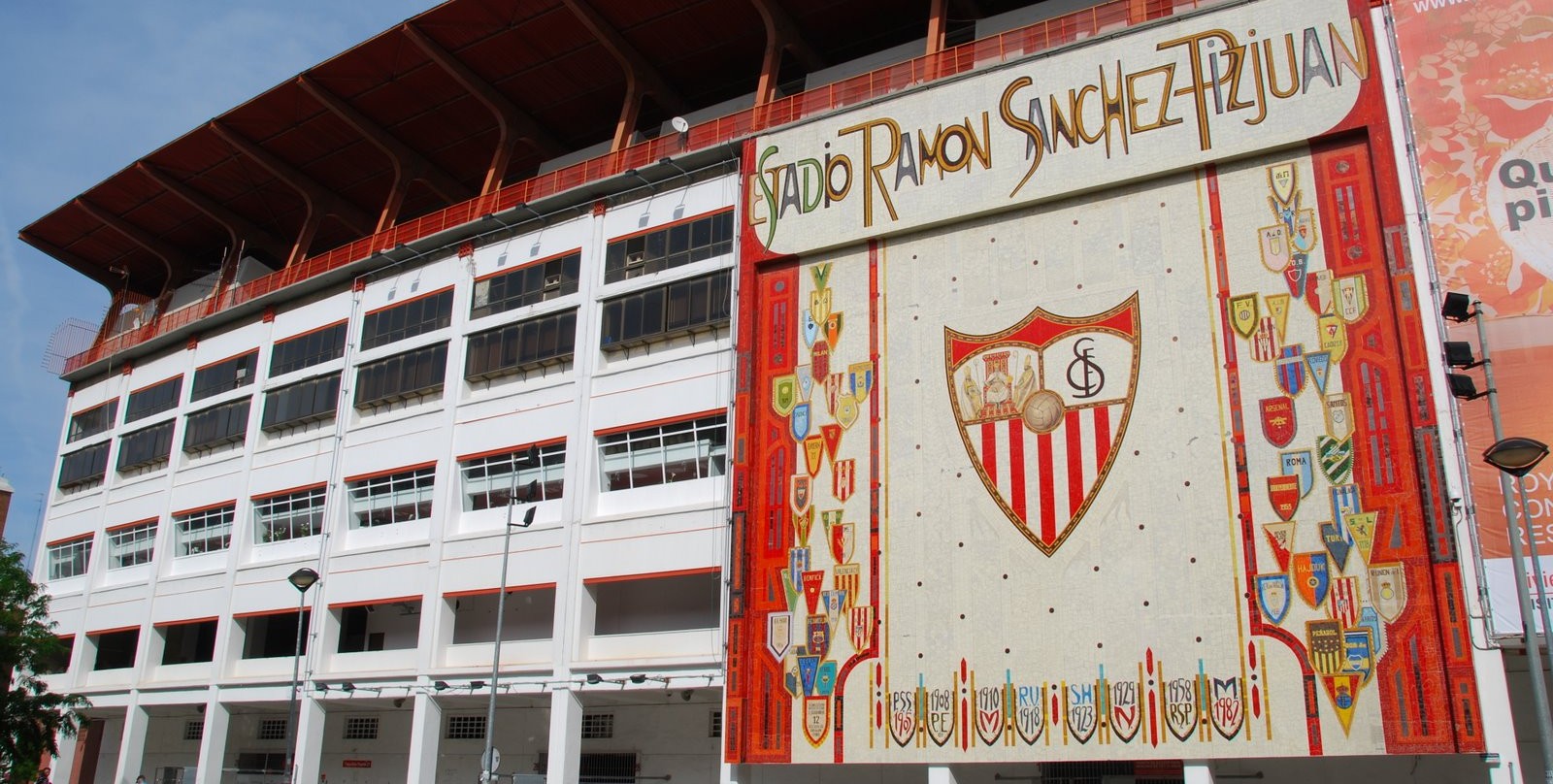
By Chris Clements (estadiosdefutbolenespana)
I need to own up. For all its uniformity and frankly tired demeanour, I still love the Estadio Ramón Sánchez Pizjuán.
You see this stadium has an aura about it, that when full, makes it one of Europe’s most daunting arenas. Add to that the sleek lines of the roof and the brilliant contrast between the green of the pitch, the red & white of the seats and the deep azure of the Andalucian sky and you have one sexy
stadium.
It’s not just me and the faithful of Sevilla Fútbol Club who like the stadium, La Selección is also rather found of it, although one suspects that this has more to do with their unbeaten record here, rather than appreciation of its sartorial elegance.
I mentioned in an earlier post that Sevilla and Betis were once one, the later only emerging into this world when discontented members of Sevilla FC left to form their own club in 1908.
Sevilla Foot-ball Club was founded three years earlier and set up home at the Prado de San Sebastian. Activity was sporadic in those first few years, not helped by the fact that the club lacked a benefactor. However, Sevilla FC found a knight in shining armour in the shape of Josep María Miró Trepat, a wealthy Catalan hotel owner, who just happened to be co-founder of the Spanish Foot-ball Club in Barcelona.
As the club grew in popularity, a more permanent facility was required and thanks to Miró Trepat’s commercial contacts, funds were raised in 1913 to build an enclosure within the Prado de San Sebastian. Named the Campo del Mercantil in recognition of the chief benefactors, it featured a permanent pitch surrounded by a wire and wooden fence.
In 1918, the club moved to its first enclosed ground, the Campo Reina Victoria. This was built on land owned by the Marquesa de Esquivel and as well as being enclosed, it featured wooden bleachers and a short pavilion. On 6 December 1923, the ground hosted the Spanish national side’s first ever international in the south of the country, a 3-0 victory over Portugal.
The 1925 Copa del Rey was also played at the venue, but by 1928, construction work for the Ibero-Americana Exhibition forced Sevilla
to move again, to a massive expanse of land in the Nervion district.
The club built a square styled stadium that had a capacity of 12,000 on land rented from the Marquis de Nervion. It featured one large uncovered tribuna and three smaller terraces and opened on 7 October 1928 with a match against cross-city rivals Betis.
In April 1938, club president Ramón Sánchez Pizjuán signed off the purchase of the land on which the Estadio Nervion stood, along with a further 42,000 square meters that surrounded the stadium for a total of 429,000 pesetas.
This was to prove to be an astute piece of business as Sevilla would benefit from the sale of plots of this land over the next fifty years.
The move to the Estadio Nervion brought the best out of Sevilla with two wins in the Copa and a first and only league title in 1946. The Estadio Nervion was extended, but the forward thinking Ramón Sánchez Pizjuán did not rest on his laurels.
He recognised that the club would require a larger
stadium if they were going to compete and sent a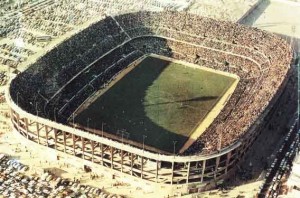
fact-finding delegation to Real Madrid to quiz them about their new stadium.
By the mid 1950’s the club had amassed a 50 million peseta war chest, specifically set aside for the building of a stadium on the land purchased nearly 20 years earlier. Designed by Manuel Muñoz Monasterio, who had collaborated on the Nuevo Chamartin, work was under way when on 28 October 1956, the club was rocked by the sudden death of president Ramón Sánchez Pizjuán.
Work continued, but progress was hampered by the quality of the subsoil. Over 800 concrete piles had to be sunk before construction of the main body of the stadium could commence, and it soon became obvious that their war chest would only cover a third of the costs.
The new stadium opened on 9 September 1958 with a friendly against Real Jaen. Two weeks later, Sevilla played Betis in the first league match at the stadium, which Betis won again, this time by 4 goals to two.
The new stadium, named Estadio Ramón Sánchez Pizjuán in honour of the late president, had become quite literally, a money pit. As a result the original plans were scaled back, leaving a 53,000 capacity stadium instead of the original plans for a 70,000 arena.
On opening, the stadium consisted of a single tier around all four sides and two anfiteatros on either side. In fact it took a further 17 years and 78 million pesetas to complete the upper end terraces and fill in the corners, raising the capacity to 70,000.
The cost off the stadium meant that Sevilla could not continue to compete at the very highest level and league form throughout the sixties and seventies was distinctly patchy.
The next major change to the stadium came in the build-up to the 1982 World Cup. The main addition was the erection of a roof over the Tribuna. Whilst simple in design, it is also stunningly elegant, balanced on stilts high above the upper tier of seating.
A retaining wall had to be built to support the cantilevered roof and it is on the centre portion of this wall, above the main entrance, that an eye-catching Mosaic stands. Created by local artist and Sevillista, Santiago del Campo, it depicts the club crest and the shields of 60 other clubs who have visited the stadium.
New floodlights were also added, but instead of towers, they sit on gantries around the top of the bowl and along the fascia of the roof. The addition of extra seats and improved media facilities saw the capacity drop to 66,000.
Surprisingly, the stadium only hosted two matches at WC’82, the first round clash between Brazil & USSR and the memorable semi-final between Germany & France. Four years later, the instantly forgettable European Cup Final between Barcelona & Steaua Bucharest was played at the
stadium.
Over the past 30 years, very little has changed has so far as the stadium is concerned. The UEFA all-seater ruling saw the capacity cut initially to 45,000, then drop to 44,000 for Champions League games. There is no denying the fact that the stadium has seen better days. Like a fading movie star, the Ramón Sánchez Pizjuán cannot rely on a soft focus lens to hide the cracks and wrinkles for too much longer.
The municipality would like the club and Betis to share the Olimpic stadium, a soulless white elephant that was built on La Cartuja Island at the turn of the century. It may prove to be a short-term option should the club redevelop the current stadium.
With little in the way of funds however, selling the land on which the stadium stands may prove to be the most likely outcome, but only once the economy picks up. In the meantime, let’s enjoy, no celebrate this fantastic stadium because once it’s gone, nobody will build another like it.
_____________________________
To read more on the footballing stadiums of Spain, visit Chris’s excellent site Estadios de fútbol en España
____________________
Follow @icentrocampista

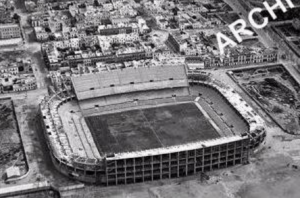
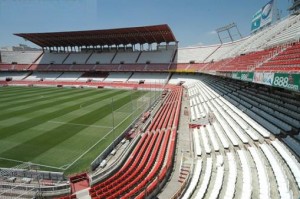
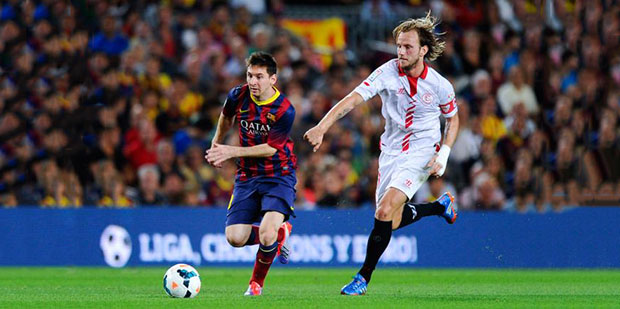
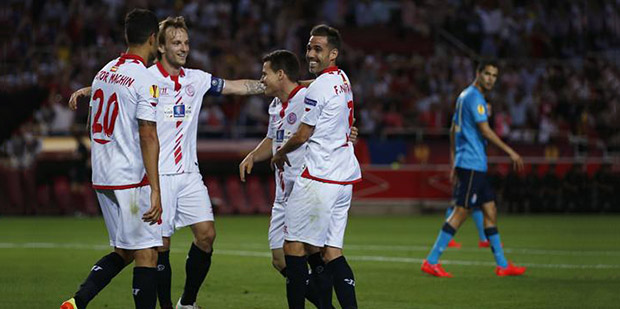
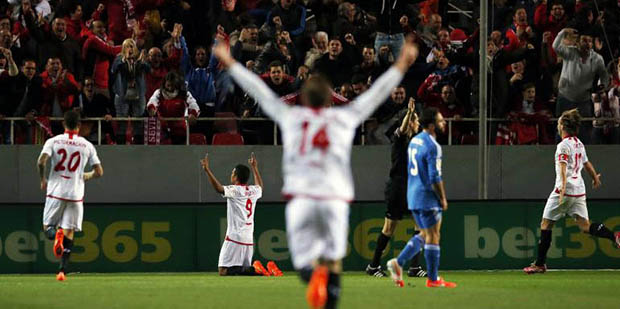


You must be logged in to post a comment Login